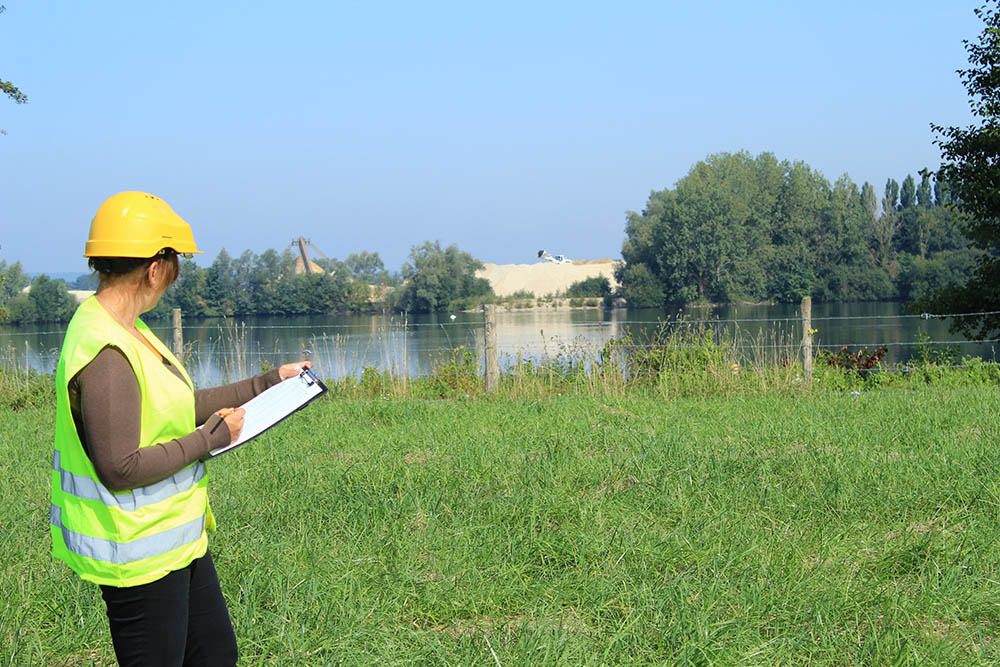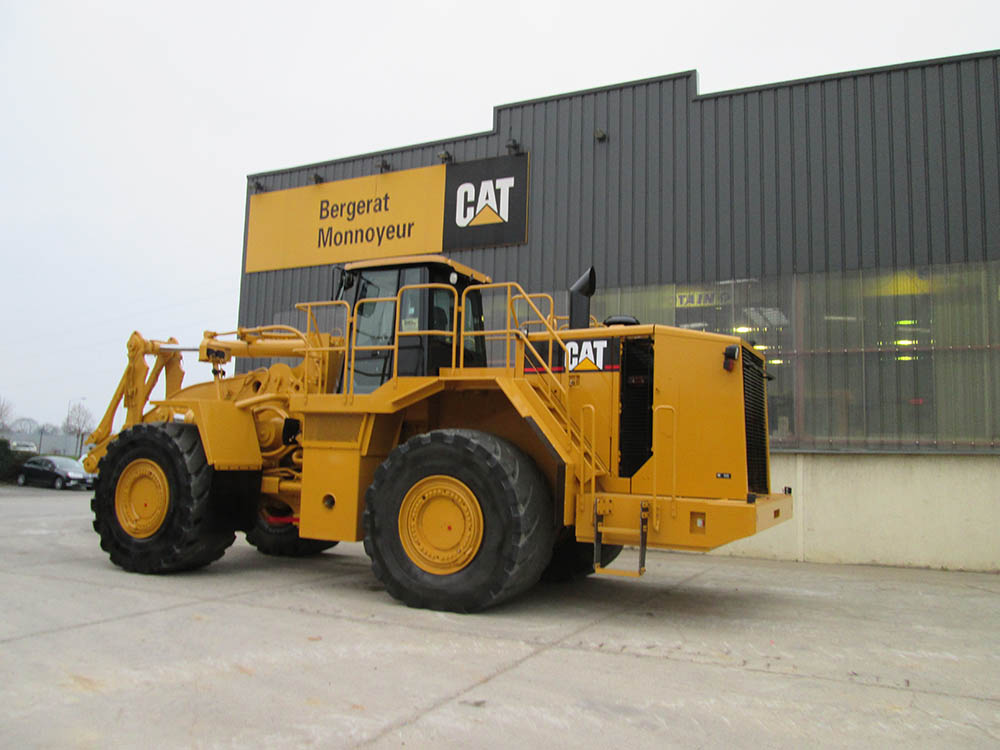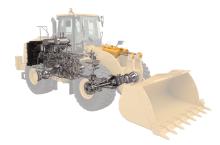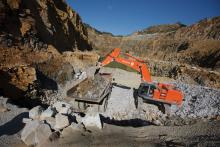
The latest market overview from UNICEM, the trade association bringing together the French mineral-extraction industries and manufacturers of construction materials, highlights how the sluggishness in the French building-materials sector in 2023 follows on from a difficult trading landscape in 2021 and 2022. In just three years, the French building-materials sector, like many other sectors, has had to deal with great challenges linked to the COVID-19 pandemic and the Russia-Ukraine war. If the sector had shown itself to be resilient in its 2021 return to pre-COVID-19-crisis activity levels, 2022 saw it face the full aftermath of the pandemic, with high inflation and rising production costs linked to supply chain disruption affecting materials availability. This contributed to aggregates and ready-mixed concrete (RMC) production falling 4% in 2022.
According to early 2023 production estimates, UNICEM says building-materials production is set to be down again in 2022. Ready-mixed concrete production in March 2023 was down 8.2% compared to March 2022. Taking a 12-month rolling basis, the RMC trend was visible (-5.5% ) in March 2023.
On the aggregates side, activity again declined at the start of the year (-0.7%) between February 2023 and March 2023 (CVS-CJO data). Production in the year to 31 March 2023 was down 11.8% compared to the previous corresponding period. Part of this is down to a particularly good aggregates-production start to 2022. During the first quarter of 2023, aggregates-production decreased (-3.5%) compared to the previous months. Moreover, it was down in the same period of 2022 (-11.8%). At the end of March 2023, rolling year-on-year aggregates production volume was down 7.5%.

After observing a decline of 3.6% on a year in the fourth quarter and 3.1% in 2022, the French building-materials indicator contracted 9.8% in Q1 2023 (CJO data). This includes the impact of reduced concrete-product production in early 2023.
According to the monthly French construction industry survey conducted by INSEE, the deterioration of the business climate, which began in January 2023, continued throughout the first quarter and April. While its level is still well above its long-term average, many signals confirm that the high point has passed and that the erosion of industry confidence will continue.
While legacy orders are still keeping material-producerbusinesses fairly busy, sector entrepreneurs are fearful about the future health of the marketplace. Tensions are evident around declining new building-material orders, while supply chain and staff recruitment difficulties remain.
Moreover, the latest indicators of the French new housing market testify to a decline in housing demand. New-home sales on a 12-month rolling basis were down 32.4% at the end of March 2023, according to Markemétron (at 88,300 units, the worst number in 15 years).
Among promoters, with barely more than 102,000 reservations for apartments and houses in 2022, the dropout reached -14.6% over the year, the trend worsening in the second semester. Social housing demand does not look better, with 15% fewer 2022 block sales (9,107 units). These trends correlate with a downturn in issued housing permits that started a few months ago. Permits issued increased by 3.2% year-on-year in 2022 (to reach the ‘comfortable’ level of 483,400 units) but plunged 25.4% year-on-year in Q4 2022 and 30.9% year-on-year in Q1 2023 (to 441,400 units).
As for housing starts, they show a decrease of 5.2% in 2022 (at 371,000 units), still visible in the first quarter of 2023 (12.8% over a year). The non-residential segment is doing better with ‘authorised surfaces’, which, after an increase of +10.7% in 2022, remained positive Q1 2023 (+0.3% over one year). The economic climate to encourage new construction has taken a significant hit. The upgrading of the usury rate drives this. Meanwhile, the rate of French ‘loans to habitat’ (mortgages) continues to grow rapidly, reaching 3.15% on average in April, a multiplication of 2.4 in just over a year.
At the same time, real estate inflation in new construction continued (+2.8% in one year and + 15.6% since 2020 for a house) under the effect of rising material prices and the introduction of RE2020, which, according to the FFB Housing division, increased construction costs by an average of 7.4%. With insolvency increasing, households face rapidly rising mortgage-refusal rates (+46.5% November 2022-January 2023 compared to the same months of the previous year).
Thanks to a new increase in activity in March 2023 compared to February 2022 (+1.5% in data CVS-CJO at constant prices), the volume of public works carried out rose compared to last year (+4.5%). However, over a rolling 12-month period, activity still showed a contraction of 5.1% as of 31 March 2023, according to the results of the investigation conducted by the FNTP (La Federation Nationale des Travaux Publics). Orders did, however, experience a strong rebound at the start of the year (+22.4% in Q1 2023), but this is exclusively attributable to the contract award for the third line of the Toulouse metro and does not reflect wider, stronger investment by public and private players.
Bergerat Monnoyeur (BM) is Caterpillar’s France dealer. Farida Selmani, BM’s marketing manager, says that as the aggregates and quarry business is a demanding sector where efficiency and productivity can make the difference between profit and loss, the company offers French customers a wide range of Cat products and services to support their goals.
“With fleets usually working long hours, a strong fleet management and maintenance programme are key to remaining productive and maximising uptime. We see a significant take-up for Customer Value Agreements (CVA). Those include preventive maintenance, remote diagnostics and fleet connectivity with VisionLink, the web-based fleet management tool. CVAs allow customers to plan their future costs and limit uncertainty.”
Asked what type of quarrying equipment quarries in France are particularly looking for, Selmani says: “More than ever, quarry owners are looking for fuel-efficient equipment that delivers the lowest cost per tonne, as fuel costs remain a challenge. To reduce those costs and maximise efficiency, customers often opt for the Cat XE range, such as the 966 XE, 972 XE, 982 XE, 988K XE wheeled loaders and the D6 XE dozer as they provide increased fuel efficiency and premium performance.
“Large excavators and rigid trucks remain among the most popular equipment combinations to transport aggregates to stockpiles or distribution centres. The range of Cat next-gen quarry excavators is expanding with the introduction of the Cat next-gen 350 that joins the 374 and 395 models. The 350 consumes up to 13% less fuel than the Cat 349 and is equipped with technology features such as Assist that help increase efficiency and Payload on-board weighing, which gives real-time weight estimates to achieve precise load targets.”
Selmani notes that another solution for customers is rebuilding equipment that allows a machine to have a second or, sometimes, a third life. “Through Cat Certified Rebuild, we rebuild Cat equipment in our workshops and return machines, components and systems that have reached the end of their life to a like-new condition. On average, we re-use 65% of the parts in a Certified Rebuild.”
Selmani also stresses that short- or long-term rentals through BM’s sister company, BM Rent, allow customers to fill production gaps and expand their business without growing their balance sheet.
She says about large French construction projects influencing national aggregates and equipment demand: “Canal Seine Nord remains a huge opportunity over the next two years. Another large project is Tunnel Euralpin Lyon-Turin (TELT), creating the Tunnel de Base de Mont Cenis, which will run 57.5km from France to Italy. Early predictions call for the opening of many quarries to support the project, one is expected to be the largest in France, and extraction is estimated to last for the next ten years.”
Like Caterpillar, Hitachi Construction Machinery (Europe) does good business in the French quarrying and large construction equipment market. Trayan Dimitrov, general manager of Hitachi Construction Machinery (Europe) France, and Patrick Top, director of sales and marketing, Hitachi Construction Machinery (Europe), see good market opportunities.
“At Hitachi Construction Machinery (Europe) (HCME), we believe that the building-materials market is continuing to grow in line with industry reports and forecasts. In addition, the demand for our core quarrying products – the large Zaxis-7 excavator range – remains strong due to their industry-leading reliability and durability, says Dimitrov. He continues: “The feedback from our customers is also positive, and we remain committed to serving their needs with our technical support, parts, fleet management systems and maintenance contracts. In addition, Hitachi Construction Machinery’s (HCM) Premium Used and Premium Rental products are gaining popularity in the French market.”

Dimitrov sees potential for HCME to further expand its quarrying sales and product-support services in all regions of France, home to around 3,400 quarries. He sees further growth potential for HCME in other parts of the French construction industry.
“This is one of the reasons behind HCME’s recent decision to acquire its authorised dealer Cobemat (now rebranded as Hitachi Construction Machinery France – HCMF). HCME’s ambition is to expand its sales and rental network in France, in line with its strategy to expand the value chain, and there will soon be a new dedicated HCM rental company established in the Île-de-France region,” Dimitrov explains.
Top says HCME’s “market-leading” 50-90 tonne excavators – the ZX490LCH-7, ZX530LCH-7, ZX690LCH-7 and ZX890LCH-7 – remain the number one choice among its French quarrying customers. “These customers have a wide range of options at their disposal. These include the availability of heavy-duty and bulk excavation arm and boom types and strengthened arms, booms and undercarriages for harsh conditions,” he notes.
Top adds: “In particular, the ZX490LCR-7, ZX690LCR-7 and ZX890LCR-7 models are reinforced to work in the harshest conditions. And there is a wide range of high-quality attachments, such as buckets and breakers, and ground-engaging tools for HCM owners to choose from for their specific quarrying needs.”
Asked by Aggregates Business what role digitalisation, automation and machine telematics play in quarrying/building-materials-processing-customers' application needs, Top responds: “The French market is one of the leading markets in this respect. For example, the first HCME Customised Solutions Zaxis-7 excavator with factory-fitted Leica Geosystems 3D machine control solution was delivered to the French contractor, Kerleroux. This is one of the optional extras available directly from HCME’s Amsterdam factory, empowering our customers to work more independently, productively and precisely.
“Further signs of growth are seen in the digital side of the industry. HCME is not only a manufacturer of equipment and machines but also a solution provider. Digital solutions have cut through in almost all areas, both on- and off-site, from telematics and data-powered machines to remote and fleet management solutions.”
Regarding the importance of sustainability issues to HCME’s French quarrying/building-materials-processing customers, Top says: “As an indicator of the importance of sustainability within the industry itself, the annual UEPG [European Aggregates Association] sustainability awards receive an increasing number of entries every year. Traditionally, quarrying may have been perceived as a polluting and noisy industry, but it is fighting against that view by playing a bigger role in local communities across Europe. An example of this can be found in France, where one site was used for theatrical productions when the quarry was not in use.
“Developments in technology are key to helping the aggregates sector to face the challenges of sustainability and lowering the cost per tonne. Equipment manufacturers are taking an innovative approach with electrification and alternative powertrains, but adopting such innovations will take time”
Top notes that quarries find it difficult to go fully electric due to the infrastructure required. “There are more elements to be considered in a quarry than a mine, for example, and the associated costs. Quarrying is also a relatively conservative industry, and it is challenging to convert operators massively to a sustainable agenda.
“Nonetheless, they are interested in new technology, particularly regarding potential fuel savings and reduced costs. While technology in mining is often considered too capital-intensive for quarrying, there is potential for both sectors to inspire each other, for example, concerning renewable energy and biodiversity.”
Dimitrov highlights major infrastructure projects using HCME machines: “The best example is the French government’s multi-billion-euro investment between 2018 and 2037- the Grand Paris Express - the largest transport project in Europe and France’s biggest current infrastructure project.
“HCME’s acquisition of Cobemat and ongoing cooperation with its other dealers in France – will enable the company to take advantage of the new opportunities presented by key accounts. Existing customers will benefit from the availability of deals direct from the manufacturer and a nationwide service structure.
“Additionally, HCMF’s territory covers the Île de France province, the largest and most challenging region driven by OEMs. External trends influencing this acquisition include upcoming large projects, the high rental-penetration ratio, and the needs of these key accounts.”









